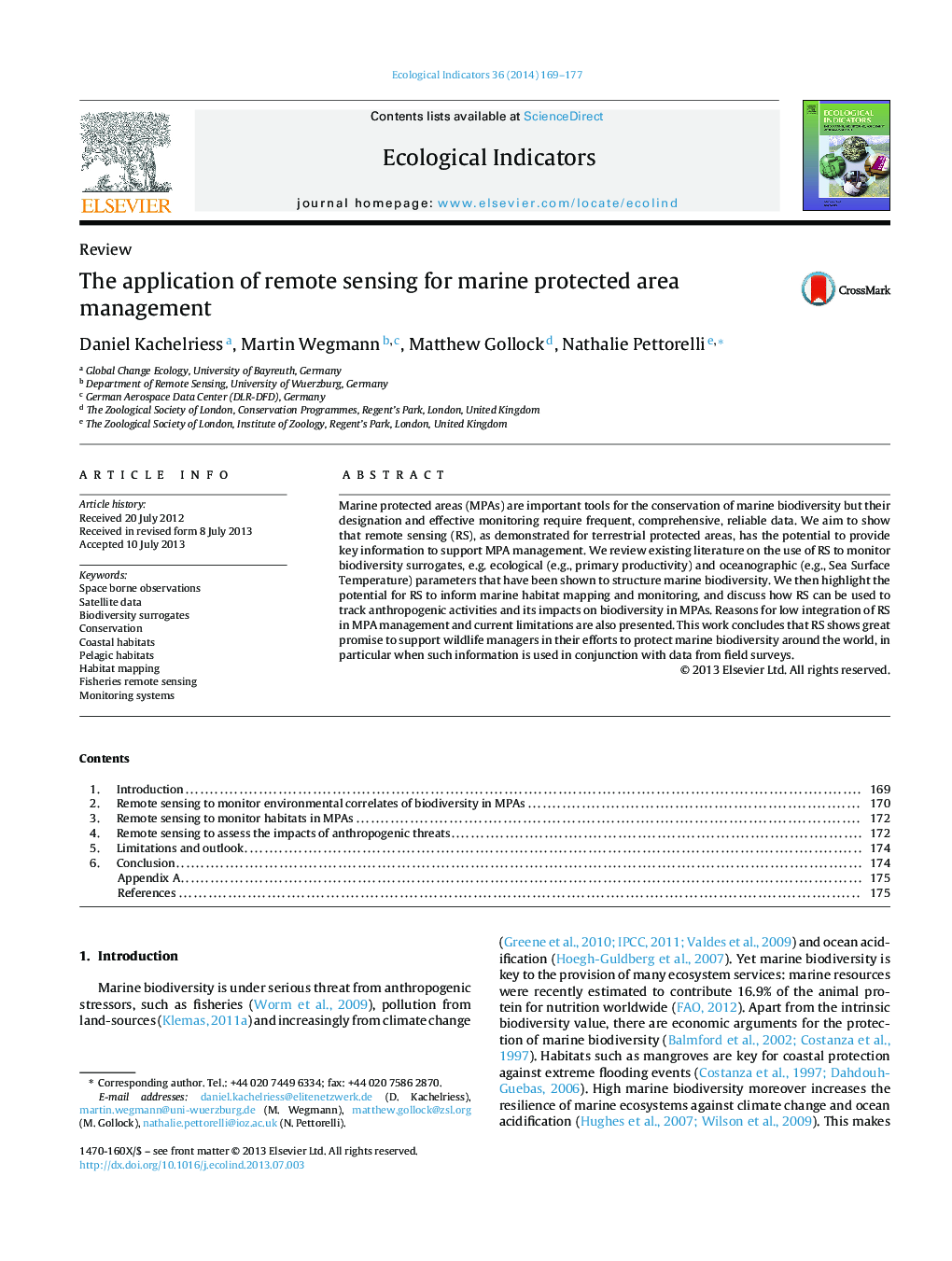| Article ID | Journal | Published Year | Pages | File Type |
|---|---|---|---|---|
| 4373307 | Ecological Indicators | 2014 | 9 Pages |
Marine protected areas (MPAs) are important tools for the conservation of marine biodiversity but their designation and effective monitoring require frequent, comprehensive, reliable data. We aim to show that remote sensing (RS), as demonstrated for terrestrial protected areas, has the potential to provide key information to support MPA management. We review existing literature on the use of RS to monitor biodiversity surrogates, e.g. ecological (e.g., primary productivity) and oceanographic (e.g., Sea Surface Temperature) parameters that have been shown to structure marine biodiversity. We then highlight the potential for RS to inform marine habitat mapping and monitoring, and discuss how RS can be used to track anthropogenic activities and its impacts on biodiversity in MPAs. Reasons for low integration of RS in MPA management and current limitations are also presented. This work concludes that RS shows great promise to support wildlife managers in their efforts to protect marine biodiversity around the world, in particular when such information is used in conjunction with data from field surveys.
